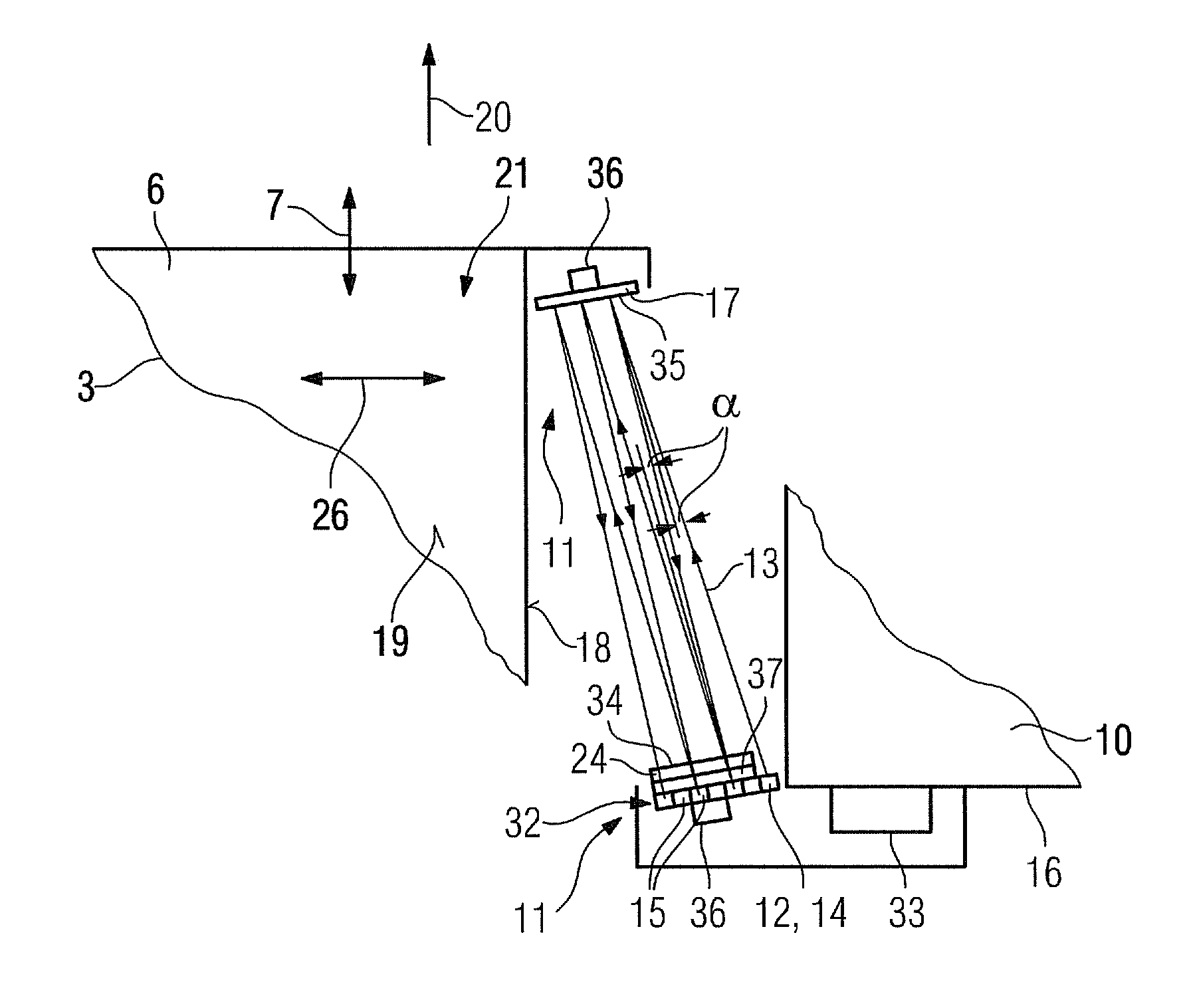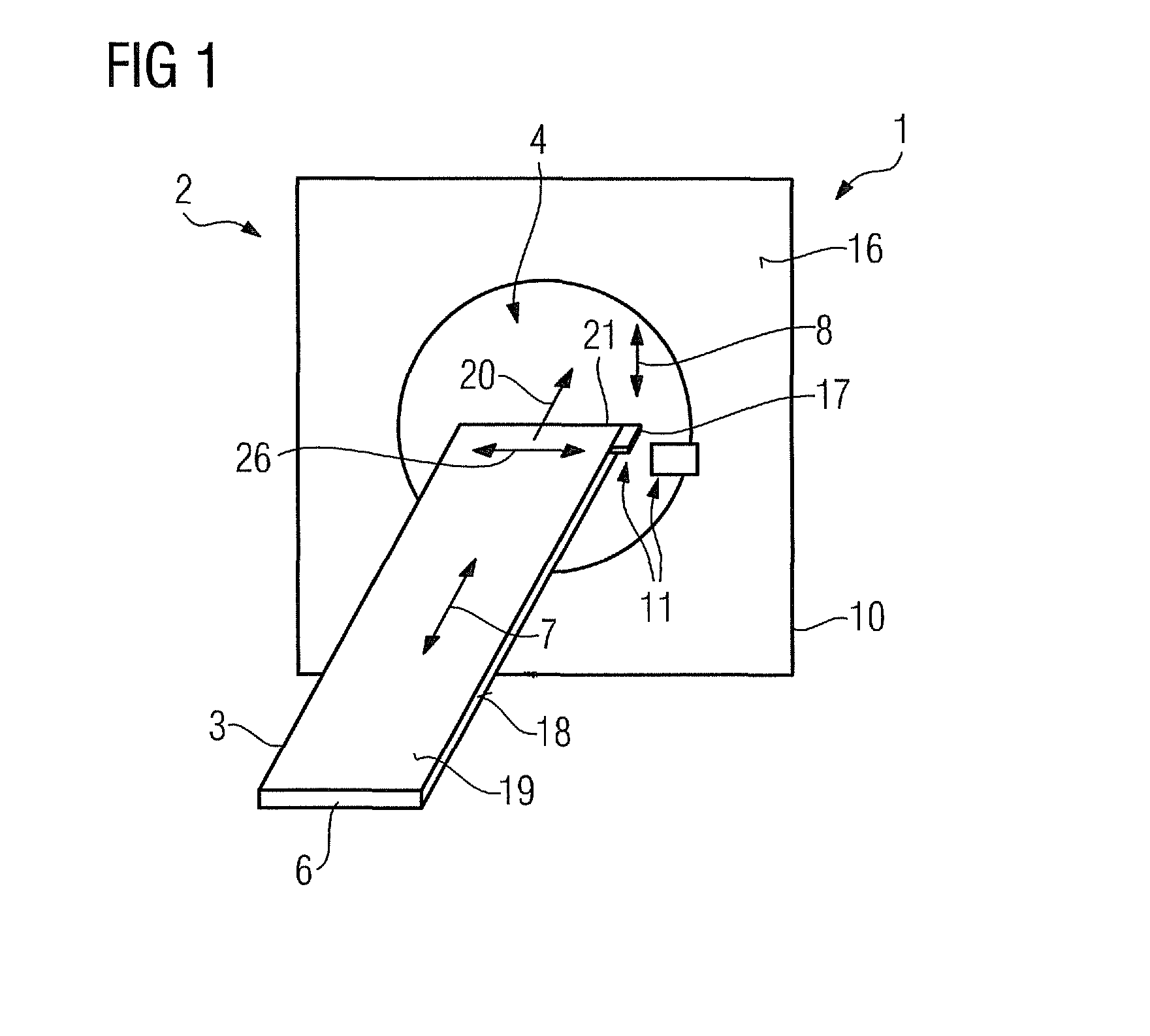Medical imaging equipment and a measuring method for detecting the position of a conveying device of the medical imaging equipment
a technology of medical imaging equipment and conveying device, which is applied in the direction of counting objects on conveyors, instruments, applications, etc., can solve the problems of high accuracy exposure to treatment and/or examination radiation, and inaccuracy of conveying device detected position
- Summary
- Abstract
- Description
- Claims
- Application Information
AI Technical Summary
Benefits of technology
Problems solved by technology
Method used
Image
Examples
Embodiment Construction
[0039]FIG. 1 shows inventive medical imaging equipment 1 which is formed by a magnetic resonance tomography apparatus 2. The magnetic resonance tomography apparatus 2 comprises a main magnet (not shown in detail) for producing a strong and constant magnetic field. The magnetic resonance tomography apparatus 2 also comprises gradient coils (not shown in detail), which are provided to produce a linear gradient field, and high frequency coils (not shown in detail). The magnetic resonance tomography apparatus 2 also comprises a receiving region 4 for receiving an object for examination and / or a patient for an imaging examination. In an alternative embodiment the medical imaging equipment 1 can also be formed by a computerized tomography apparatus and / or a PET apparatus.
[0040]The medical imaging equipment 1 also comprises a conveying device 3, which includes a patient couch 6 and is movably arranged in a z-direction 7. The z-direction 7 runs parallel to a surface normal of a receiving op...
PUM
 Login to View More
Login to View More Abstract
Description
Claims
Application Information
 Login to View More
Login to View More - R&D
- Intellectual Property
- Life Sciences
- Materials
- Tech Scout
- Unparalleled Data Quality
- Higher Quality Content
- 60% Fewer Hallucinations
Browse by: Latest US Patents, China's latest patents, Technical Efficacy Thesaurus, Application Domain, Technology Topic, Popular Technical Reports.
© 2025 PatSnap. All rights reserved.Legal|Privacy policy|Modern Slavery Act Transparency Statement|Sitemap|About US| Contact US: help@patsnap.com



